- Battery Manufacturing Equipment
- Battery Laboratory Assembly Equipment
- Battery Pack Assembly Equipment
- Sodium Ion Battery Manufacturing Equipment
- Dry Electrode Assembly Equipment
- Supercapacitor Assembly Equipment
- Battery Laboratory Equipment
- Li ion Battery Tester
- Battery Safety Tester
- Battery Material Tester
- Film Coating Machine
- Rolling Press Machine
- Electrode Mixer
- Coin Cell Crimping Machine
- Coin Cell Electrode Disc Punching
- Pouch Cell Sealing Machine
- Pouch Cell Stacking Machine
- Pouch Cell Forming Machine
- Pouch Cell Ultrasonic Welder
- Pouch Cell Electrode Die Cutter
- Cylinder Cell Sealing Machine
- Cylinder Cell Grooving Machine
- Cylinder Cell Slitting Machine
- Cylinder Cell Winding Machine
- Cylinder Cell Spot Welding Machine
- Electrolyte Filling
- Type Test Cell
- Other Battery Making Machine
- NMP Solvent Treatment System
- Li ion Battery Materials
- Ni / Al / Cu Metal Foam
- Cathode Active Materials
- Anode Active Materials
- Coin Cell Parts
- Lithium Chip
- Cylindrical Cell Parts
- Battery Current Collectors
- Battery Conductive Materials
- Electrolyte
- Battery Binder
- Separator and Tape
- Aluminum Laminate Film
- Nickel Strip/Foil
- Battery Tabs
- Graphene Materials
- Cu / Al / Ni / Stainless steel Foil
- Vacuum Glove Box
- Lab Furnaces
- Ball Mill
- Hydraulic Press
- Laboratory Equipment
- Customized Electrode
blog
Pouch Cell Making Plant
- 2023-08-23
Pouch Cell Making Plant: Powering the Future of Energy Storage
In an era defined by the relentless pursuit of cleaner and more efficient energy solutions, the role of energy storage technologies has become paramount. Among these technologies, pouch cells have emerged as a versatile and practical choice, and the manufacturing plants behind them play a pivotal role in shaping the energy landscape of the future.
Introduction
Pouch cells, a type of lithium-ion battery, have been gaining prominence across various industries due to their lightweight design, flexibility, and high energy density. Their applications span electric vehicles, consumer electronics, renewable energy storage, and more. Behind these innovative powerhouses lie the highly specialized and sophisticated Pouch Cell Making Plants.
The Manufacturing Process
The journey of a pouch cell begins within these manufacturing plants, where precision and expertise are paramount. The process involves several critical steps:
1. Electrode Coating: It all starts with electrode coating, a process where the positive and negative electrode materials are uniformly applied onto metal foils. This stage is a masterpiece of precision as the thickness and evenness of the coating can significantly affect the battery's performance.
2. Separator Placement: Next, the separator, a thin and porous insulating layer, is carefully positioned between the coated electrode layers. This separator acts as a barrier, preventing internal short circuits while allowing the flow of lithium ions.
3. Electrolyte Filling Machine: Once the electrodes and separator are in place, the battery's heart—the electrolyte—is injected into the assembly. The electrolyte, a conductive solution, facilitates the movement of ions between the electrodes during charging and discharging.
4. Sealing: The sealed enclosure is a critical element in the pouch cell's design. Proper sealing ensures that the battery remains airtight and prevents electrolyte leakage, ensuring its long-term reliability.
5. Formation and Aging: After sealing, the pouch cells undergo a formation process. This involves controlled charging and discharging cycles to stabilize the battery's performance. Aging tests simulate the battery's life expectancy under various usage conditions.
Equipment and Machinery
The backbone of these plants consists of highly specialized machinery and equipment designed to handle the intricacies of pouch cell production:
Electrode Coating Machines: These machines ensure the even and consistent coating of electrode materials on metal foils, a fundamental step for optimal performance.
Separator Placement Devices: Precision is key in placing separators accurately between the electrodes, and specialized equipment is employed for this task.
Electrolyte Filling Systems: These systems carefully inject the conductive electrolyte into each cell, a process critical for the battery's function.
Sealing Equipment: Airtight sealing machines are crucial in maintaining the integrity of the pouch cell, ensuring safety and longevity.
Testing and Quality Control Systems: Comprehensive testing equipment assesses each cell's capacity, voltage characteristics, cycle life, and safety features, upholding stringent quality control standards.
Materials Selection
The choice of materials is fundamental to pouch cell production. It includes selecting the right electrode materials, separators, electrolytes, and outer packaging. These materials impact the battery's efficiency, performance, and safety.
Quality Control
Quality control is at the core of pouch cell production. Each cell undergoes rigorous testing, ensuring compliance with stringent performance and safety standards. This meticulous attention to quality guarantees reliable and safe energy storage solutions for consumers and industries alike.
Innovation and Sustainability
Pouch Cell Making Plants are hotbeds of innovation, constantly seeking ways to enhance efficiency and sustainability. Automation, data analytics, IoT, and AI technologies are integrated into production processes to boost efficiency and precision.
Furthermore, as the world moves towards more sustainable practices, these plants are committed to minimizing their environmental footprint. Waste management, energy efficiency, and material recycling are integral parts of their operations.
Future Prospects
As the demand for energy storage solutions continues to rise, the role of Pouch Cell Making Plants becomes increasingly significant. The future holds exciting possibilities, including advancements in materials, energy density, and manufacturing processes. These plants are at the forefront, driving innovation in energy storage technology.
Conclusion
In an era defined by the relentless pursuit of cleaner and more efficient energy solutions, the role of energy storage technologies has become paramount. Among these technologies, pouch cells have emerged as a versatile and practical choice, and the manufacturing plants behind them play a pivotal role in shaping the energy landscape of the future.
Introduction
Pouch cells, a type of lithium-ion battery, have been gaining prominence across various industries due to their lightweight design, flexibility, and high energy density. Their applications span electric vehicles, consumer electronics, renewable energy storage, and more. Behind these innovative powerhouses lie the highly specialized and sophisticated Pouch Cell Making Plants.
The Manufacturing Process
The journey of a pouch cell begins within these manufacturing plants, where precision and expertise are paramount. The process involves several critical steps:
1. Electrode Coating: It all starts with electrode coating, a process where the positive and negative electrode materials are uniformly applied onto metal foils. This stage is a masterpiece of precision as the thickness and evenness of the coating can significantly affect the battery's performance.
2. Separator Placement: Next, the separator, a thin and porous insulating layer, is carefully positioned between the coated electrode layers. This separator acts as a barrier, preventing internal short circuits while allowing the flow of lithium ions.
3. Electrolyte Filling Machine: Once the electrodes and separator are in place, the battery's heart—the electrolyte—is injected into the assembly. The electrolyte, a conductive solution, facilitates the movement of ions between the electrodes during charging and discharging.
4. Sealing: The sealed enclosure is a critical element in the pouch cell's design. Proper sealing ensures that the battery remains airtight and prevents electrolyte leakage, ensuring its long-term reliability.
5. Formation and Aging: After sealing, the pouch cells undergo a formation process. This involves controlled charging and discharging cycles to stabilize the battery's performance. Aging tests simulate the battery's life expectancy under various usage conditions.
Equipment and Machinery
The backbone of these plants consists of highly specialized machinery and equipment designed to handle the intricacies of pouch cell production:
Electrode Coating Machines: These machines ensure the even and consistent coating of electrode materials on metal foils, a fundamental step for optimal performance.
Separator Placement Devices: Precision is key in placing separators accurately between the electrodes, and specialized equipment is employed for this task.
Electrolyte Filling Systems: These systems carefully inject the conductive electrolyte into each cell, a process critical for the battery's function.
Sealing Equipment: Airtight sealing machines are crucial in maintaining the integrity of the pouch cell, ensuring safety and longevity.
Testing and Quality Control Systems: Comprehensive testing equipment assesses each cell's capacity, voltage characteristics, cycle life, and safety features, upholding stringent quality control standards.
Materials Selection
The choice of materials is fundamental to pouch cell production. It includes selecting the right electrode materials, separators, electrolytes, and outer packaging. These materials impact the battery's efficiency, performance, and safety.
Quality Control
Quality control is at the core of pouch cell production. Each cell undergoes rigorous testing, ensuring compliance with stringent performance and safety standards. This meticulous attention to quality guarantees reliable and safe energy storage solutions for consumers and industries alike.
Innovation and Sustainability
Pouch Cell Making Plants are hotbeds of innovation, constantly seeking ways to enhance efficiency and sustainability. Automation, data analytics, IoT, and AI technologies are integrated into production processes to boost efficiency and precision.
Furthermore, as the world moves towards more sustainable practices, these plants are committed to minimizing their environmental footprint. Waste management, energy efficiency, and material recycling are integral parts of their operations.
Future Prospects
As the demand for energy storage solutions continues to rise, the role of Pouch Cell Making Plants becomes increasingly significant. The future holds exciting possibilities, including advancements in materials, energy density, and manufacturing processes. These plants are at the forefront, driving innovation in energy storage technology.
Conclusion
Pouch Cell Making Plants represent the vital link between cutting-edge technology and practical energy solutions. They embody the precision, innovation, and sustainability required to meet the world's growing energy storage needs. With these plants leading.
HOT PRODUCTS
-
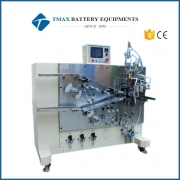 Automatic Cylinderical Battery Electrode Winding Machine
Read More
Automatic Cylinderical Battery Electrode Winding Machine
Read More
-
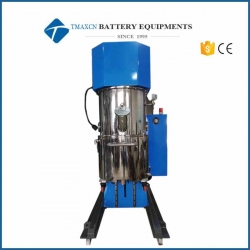 100-200L Double Planetary Vacuum Mixing Machine for Lithium Battery Slurry
Read More
100-200L Double Planetary Vacuum Mixing Machine for Lithium Battery Slurry
Read More
-
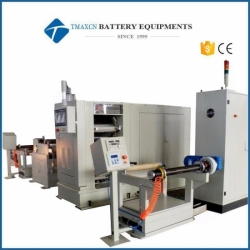 Large Heating Roller Press Machine Calender For Li ion Battery Production Line
Read More
Large Heating Roller Press Machine Calender For Li ion Battery Production Line
Read More
-
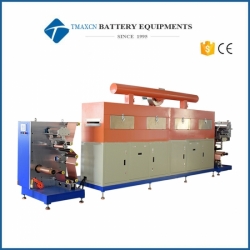 Large 3 Rollers Battery Electrode Film Intermittent Coating Machine for Pilot Production Line
Read More
Large 3 Rollers Battery Electrode Film Intermittent Coating Machine for Pilot Production Line
Read More
-
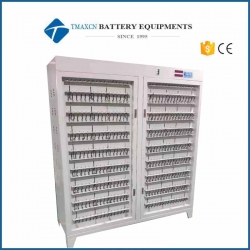 512 Channel 5V3A Battery Grading Machine/Battery Charge Discharge Machine Tester
Read More
512 Channel 5V3A Battery Grading Machine/Battery Charge Discharge Machine Tester
Read More


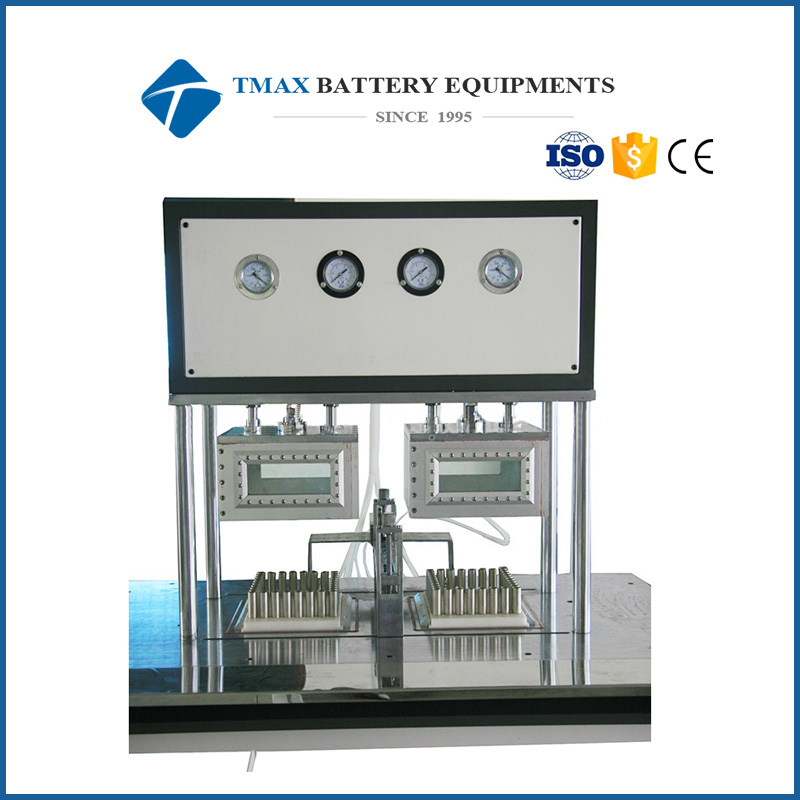
 cindy@tmaxcn.com
cindy@tmaxcn.com David@battery-equipments.com
David@battery-equipments.com Wechat 13506084915
Wechat 13506084915